Soccer

Soccer Gameplay
Association football is played in accordance with a set of rules known as the Laws of the Game. The game is played using a spherical ball of 68.5–69.5 cm (27.0–27.4 in) circumference, known as the football (or soccer ball). Two teams of eleven players each compete to get the ball into the other team's goal (between the posts and under the bar), thereby scoring a goal. The team that has scored more goals at the end of the game is the winner; if both teams have scored an equal number of goals then the game is a draw. Each team is led by a captain who has only one official responsibility as mandated by the Laws of the Game: to be involved in the coin toss prior to kick-off or penalty kicks.
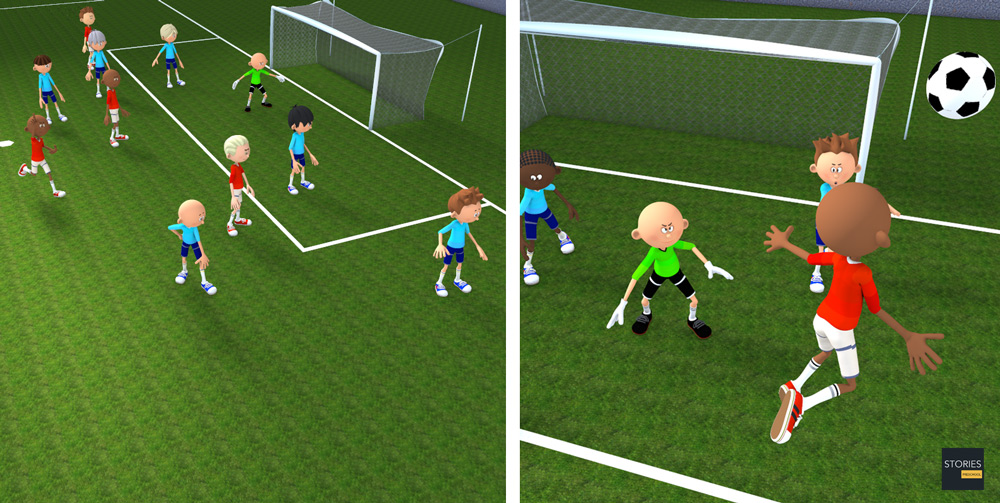
The primary law is that players other than goalkeepers may not deliberately handle the ball with their hands or arms during play, though they do use their hands during a throw-in restart. Although players usually use their feet to move the ball around, they may use any part of their body (notably, "heading" with the forehead) other than their hands or arms. Within normal play, all players are free to play the ball in any direction and move throughout the pitch, though the ball cannot be received in an offside position.
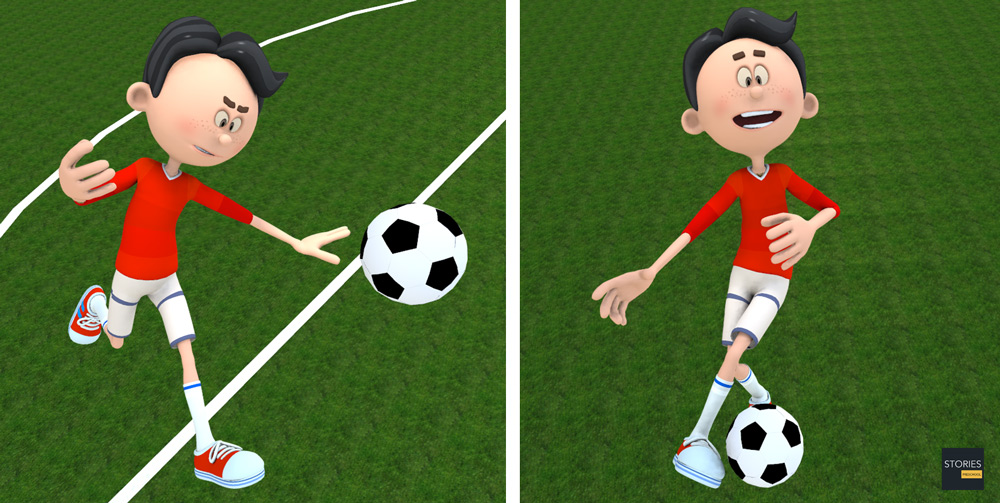
In game play, players attempt to create goal-scoring opportunities through individual control of the ball, such as by dribbling, passing the ball to a team-mate, and by taking shots at the goal, which is guarded by the opposing goalkeeper. Opposing players may try to regain control of the ball by intercepting a pass or through tackling the opponent in possession of the ball; however, physical contact between opponents is restricted. Football is generally a free-flowing game, with play stopping only when the ball has left the field of play or when play is stopped by the referee for an infringement of the rules. After a stoppage, play recommences with a specified restart.
At a professional level, most matches produce only a few goals. For example, the 2005–06 season of the English Premier League produced an average of 2.48 goals per match. The Laws of the Game do not specify any player positions other than goalkeeper, but a number of specialized roles have evolved.
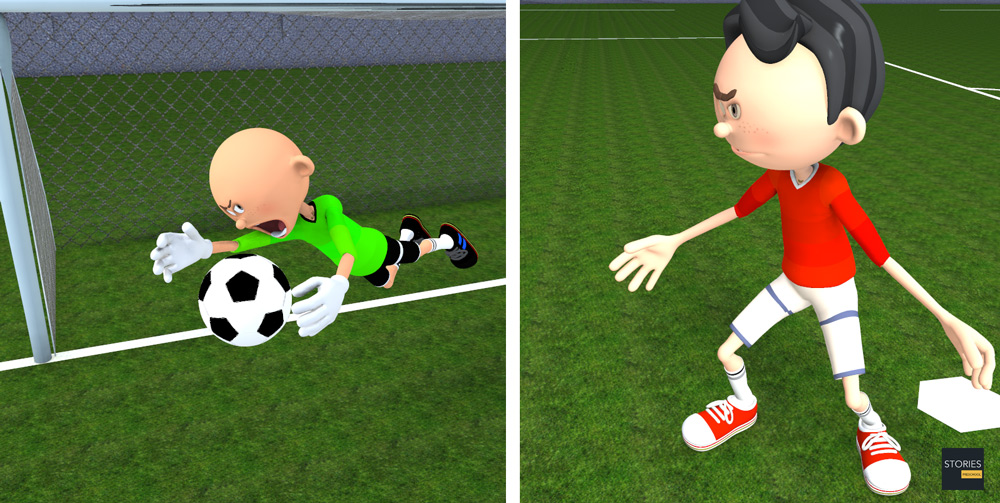
Broadly, these include three main categories: strikers, or forwards, whose main task is to score goals; defenders, who specialize in preventing their opponents from scoring; and midfielders, who dispossess the opposition and keep possession of the ball to pass it to the forwards on their team. Players in these positions are referred to as outfield players, to distinguish them from the goalkeeper. These positions are further subdivided according to the area of the field in which the player spends most time. For example, there are central defenders, and left and right midfielders.
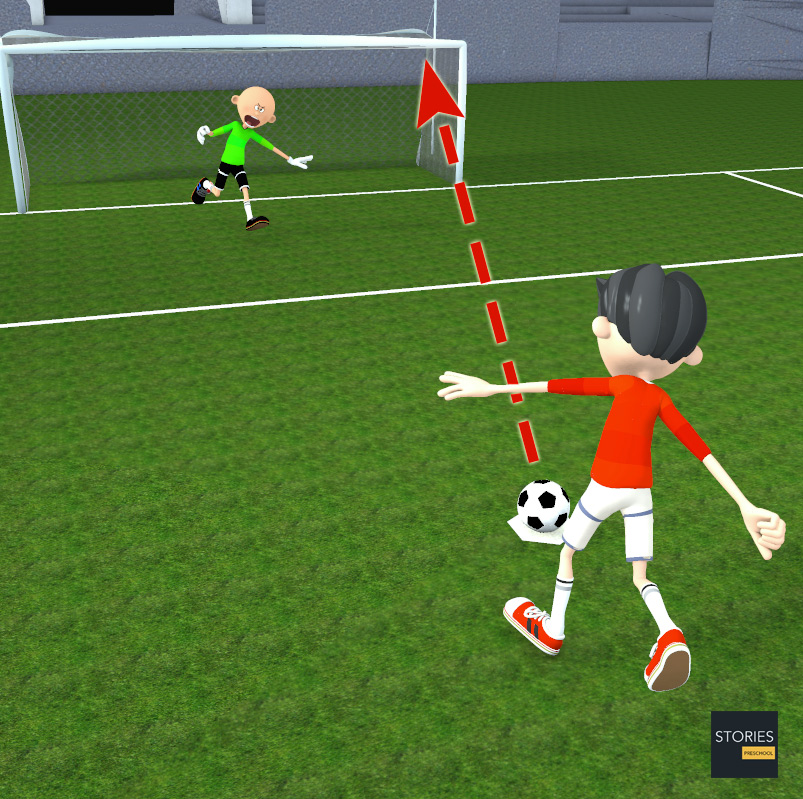
The ten outfield players may be arranged in any combination. The number of players in each position determines the style of the team's play; more forwards and fewer defenders creates a more aggressive and offensive-minded game, while the reverse creates a slower, more defensive style of play. While players typically spend most of the game in a specific position, there are few restrictions on player movement, and players can switch positions at any time. The layout of a team's players is known as a formation. Defining the team's formation and tactics is usually the prerogative of the team's manager.
Ball In and Out of Play
Under the Laws, the two basic states of play during a game are ball in play and ball out of play. From the beginning of each playing period with a kick-off until the end of the playing period, the ball is in play at all times, except when either the ball leaves the field of play, or play is stopped by the referee.
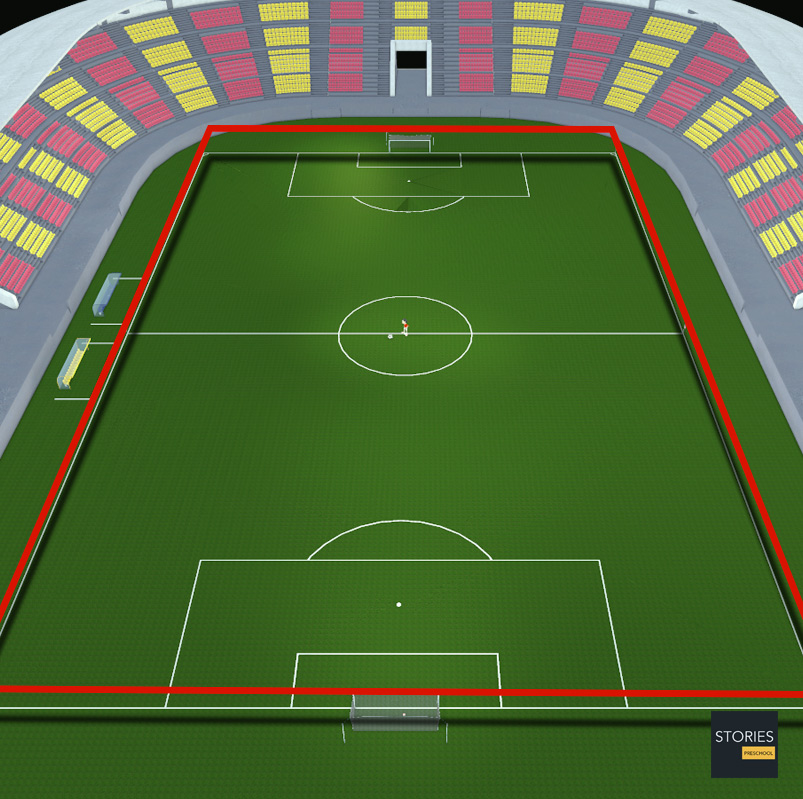
In Play
The ball remains in play from the beginning of each period to the end of that period, except when:
- The ball leaves the field by entirely crossing a goal line or touch line (this includes when a goal is scored); or
- Play is stopped by the referee (for example when a foul has been committed, a player is seriously injured, or the ball becomes defective).
The Law specifically notes that the ball remains in play if it rebounds off a goal frame, corner flag, referee or assistant referee, assuming that they are on the field of play at the time.
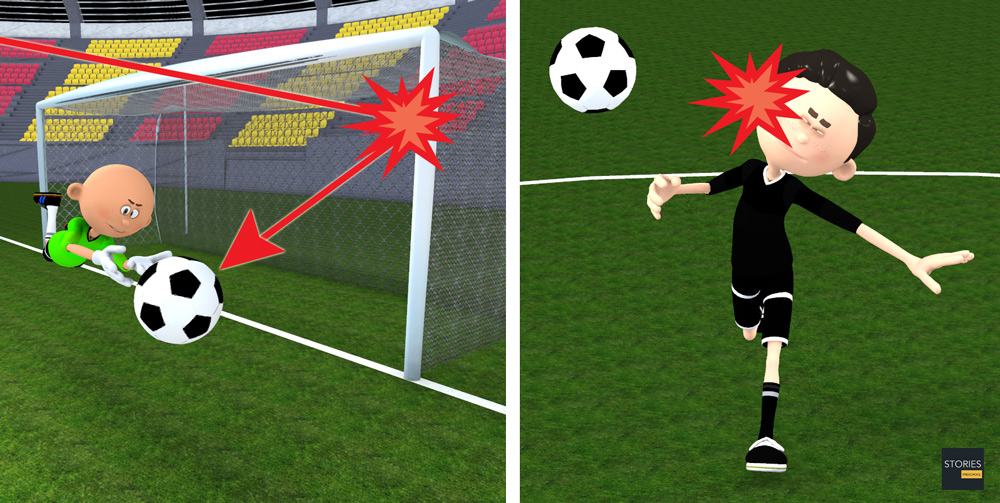
When the ball is in play players may play the ball, contest the ball, and goals may be scored. Players are liable to punishment for committing either fouls or misconduct. Substitutions may not occur whilst the ball is in play.
Restarts
When the ball becomes out of play, play is restarted by one of eight restart methods depending on how it went out of play:
- Kick-off: following a goal by the opposing team, or to begin each period of play.
- Throw-in: when the ball has crossed the touchline; awarded to the opposing team to that which last touched the ball.
- Goal kick: when the ball has wholly crossed the goal line without a goal having been scored and having last been touched by a player of the attacking team; awarded to defending team.
- Corner kick: when the ball has wholly crossed the goal line without a goal having been scored and having last been touched by a player of the defending team; awarded to attacking team.
- Indirect free kick: awarded to the opposing team following "non-penal" fouls, certain technical infringements, or when play is stopped to caution or dismiss an opponent without a specific foul having occurred. A goal may not be scored directly (without the ball first touching another player) from an indirect free kick.
- Direct free kick: awarded to fouled team following certain listed "penal" fouls. A goal may be scored directly from a direct free kick.
- Penalty kick: awarded to the fouled team following a foul usually punishable by a direct free kick but that has occurred within their opponent's penalty area.
- Dropped-ball: occurs when the referee has stopped play for any other reason, such as a serious injury to a player, interference by an external party, or a ball becoming defective.
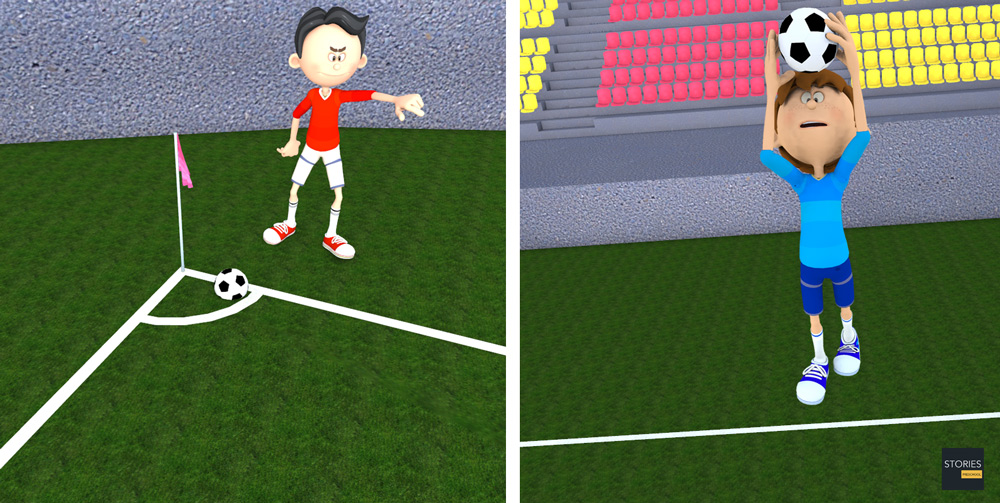
Once the ball is out of play, the only restart is the restart appropriate for the reason the ball went out of play in the first place; subsequent actions do not change the restart. For example, if the ball goes out of play because of a foul by Team A against Team B, the restart must be a free kick to Team B even if a Team B player strikes an opponent; offending Team B player would, however, be liable for misconduct (i.e. yellow card or red card).
Note, however, that the referee may change the original restart if he realizes he has made an error or on the advice of his assistant referees, provided play has not yet restarted. For example, if the ball has gone out of play because the ball was kicked into goal by Team A and the referee has signaled that a goal has been scored, but then notices that an assistant referee has indicated a foul by a Team A player immediately before the goal was scored, the referee would change to the correct restart of a free kick to Team B where the foul occurred.
SPORTS

RESOURCES
This article uses material from the Wikipedia articles "Association football" and "Ball in and out of play", which is released under the Creative Commons Attribution-Share-Alike License 3.0.
© Stories Preschool. All Rights Reserved.












